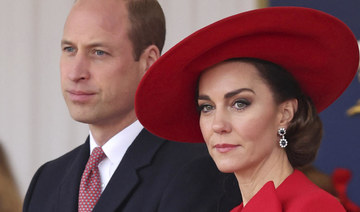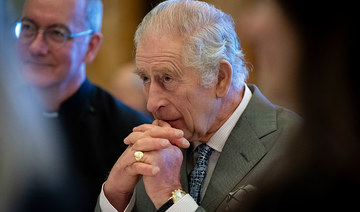LONDON: Upon receiving his first treatment for cancer, Britain’s King Charles III retreated to Sandringham House, a private estate where the monarch has long taken refuge while walking and shooting along the windswept North Sea coast of eastern England.
Sandringham, the private home of the last six British monarchs, sits amid parkland, gardens and working farms about 110 miles (180 kilometers) north of London. It has been owned by the royal family since 1862, passing directly from one monarch to the next for more than 160 years.
This history has made Sandringham a special place for Charles and his entire family. But the king has gone there for a very practical reason, said former BBC royal reporter Michael Cole.
“He needs isolation, and Sandringham of all his royal properties, with the possible exception of Balmoral, where the weather is not terribly good at this time of year, is isolated,’’ Cole said. “It’s only 100 miles from London, but it is surrounded by its own grounds. … He can be separate, because when you are having cancer treatment of any kind, infection must be avoided.’’
Charles, who started visiting the estate as a child, first found sanctuary at Sandringham when he was a student at Cambridge University and later after his marriage to Princess Diana collapsed.
Now it is a place of shelter once again.
WHERE HAS THE KING GONE?
One of the most famous stately homes in Britain, Sandringham sits on an 8,000-hectare (20,000-acre) estate in Norfolk on the eastern coast of England.
It was recorded in the Domesday Book, the survey of lands in England compiled by William the Conqueror in 1086, as “Sant Dersingham,” or the sandy part of Dersingham. That was shortened to Sandringham in later years.
Queen Victoria bought Sandringham for her eldest son, Edward, in 1862, largely in hopes that becoming a country gentleman would keep the playboy prince out of trouble in the nightspots of London, Paris, Monte Carlo and Biarritz.
George V, the late Queen Elizabeth II’s grandfather, described the estate as “Dear old Sandringham, the place I love better than anywhere else in the world.’’
George VI, the king’s grandfather, loved it as well. On the day he died, George reportedly spent the afternoon on the estate with his dogs and a gun.
Charles began joining the shooting parties as a child in the 1950s, with one photograph catching him blowing a miniature hunting trumpet while sitting on horseback.
But Sandringham was also a place where Charles and his sister could play hide and seek or tag with their mother and father, with the adults ‘’casting off all inhibition and chasing one another, as well as the prince and princess, around the saloon, along the corridors, into the drawing room, up the stairs and along the landing, tripping up guests, shrieking ad squealing all the while,” biographer Jonathan Dimbleby, wrote in his 1994 book “The Prince of Wales.’’
WHAT IS SO SPECIAL ABOUT SANDRINGHAM?
Charles, who continues to hike and shoot at the age of 75, is said to revel in the chance to be outdoors and breathe the fresh air along the Norfolk coast.
“There is absolutely nothing between Sandringham and the North Pole,” Cole said. “So, when the cold winds blow, they blow straight down from the Arctic Circle into North Norfolk. So, you better have your woolly underwear on when you’re there.”
Charles also enjoys meeting with the estate’s staff and tenants, with whom he has developed personal relationships over the years, Dimbleby wrote.
When he was at Cambridge, Charles would often invite friends to spend weekends with him enjoying the shooting at Sandringham.
“Any excuse to escape from Cambridge and plod across plowed fields instead of stagnating in lecture rooms is enormously welcome,” he said in a letter quoted by Dimbleby.
Much later, it was Princess Diana’s refusal to let Princes William and Harry join a weekend party at Sandringham that finally convinced Charles the marriage was over.
“Eventually, when it became clear that she was not going to relent, he snapped,” Dimbleby wrote. “Unable to see any future in a relationship conducted on these terms, he decided he had no choice but to ask his wife for a legal separation.”
CAN THE PUBLIC VISIT?
Yes, but the public only gets to see so much.
The main eight ground floor rooms of Sandringham House, a sprawling structure that was built in 1870, are open to the public from April to October.
Guests can also visit the parklands, which cover more than 243 hectares (600 acres), and 25 hectares (60 acres) of gardens. There’s also a museum with gifts given to the royal family by dignitaries from around the world.
A restaurant and cafe offer food throughout the year, including afternoon tea.
In order to keep litter under control, the late Queen Elizabeth II advised that the paper cups for tea and coffee should have the words “Sandringham House’’ printed on them so that visitors would take them home as souvenirs, Cole said.
Charles retreats to Sandringham, an estate with brisk winds and splendid isolation
https://arab.news/zsdmw
Charles retreats to Sandringham, an estate with brisk winds and splendid isolation
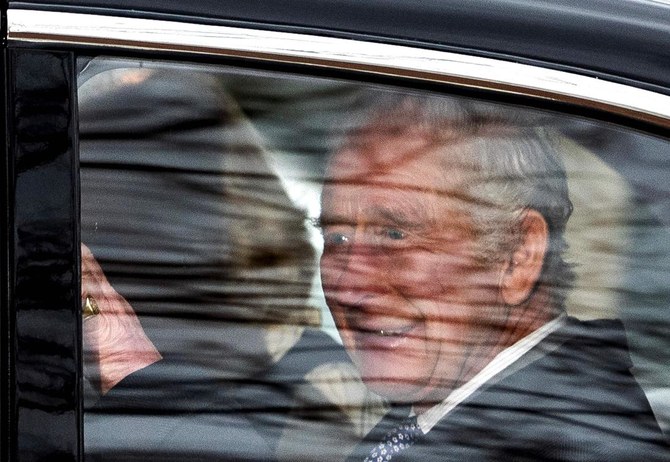
- Sandringham, the private home of the last six British monarchs, sits amid parkland, gardens and working farms about 180 kilometers north of London
- Charles, who started visiting the estate as a child, first found sanctuary at Sandringham when he was a student at Cambridge University
New Caledonia ‘under siege’ as French troops bid to restore order

- The unrest has been blamed on economic malaise, social tensions and — above all — a political fight between mostly Indigenous pro-independence activists and Paris authorities
- New Caledonia has been a French territory since the mid-1800s
NOUMEA, New Caledonia: French Pacific territory New Caledonia was “under siege” Saturday, the mayor of its capital Noumea said, after another person was killed, bringing the toll to six in six days of unrest.
Two other men were wounded in Saturday’s deadly incident, which occurred in the archipelago’s northern Kaala-Gomen area, General Nicolas Mattheos said.
Hundreds of heavily armed French soldiers and police patrolled the debris-filled streets of Noumea Saturday.
But Philippe Blaise, vice president of the territory’s southern province, said: “Today, the rule of law, security for citizens, are not back in place everywhere in (New) Caledonia.”
And Noumea mayor Sonia Lagarde told news channel BFMTV: “We’re far from getting back to calm.”
Anger is still high over a contested voting reform, even after the arrival of hundreds of military and police reinforcements.
AFP reporters in the city’s Magenta district saw vehicles and buildings torched, with riot police on the scene trying to reassert control.
Overnight, residents reported hearing gunfire, helicopters and “massive explosions” — seemingly gas canisters blowing up inside a burning building.
For days, Helene, 42, has been guarding makeshift barricades in shifts with neighbors as they waited for hundreds of French security forces to be flown in to restore order.
“At night we hear shooting and things going off,” she told AFP. “Helicopters and military planes landing — which is sweet music to our ears.”
Economic malaise
For almost a week, the usually calm oceanside city has been convulsed with violence.
Two gendarmes and three other people, Indigenous Kanaks, have also been killed.
The unrest has been blamed on economic malaise, social tensions and — above all — a political fight between mostly Indigenous pro-independence activists and Paris authorities.
French officials have accused a separatist group known as the CCAT of being behind the riots and have placed 10 of its activists under house arrest.
CCAT on Friday called for “a time of calm to break the spiral of violence.”
Annie, an 81-year-old Noumea resident, said the week’s violence had been worse than that seen during the tumultuous 1980s: a time of political killings and hostage-taking referred to as “The Events.”
“At the time, there weren’t as many weapons,” she said.
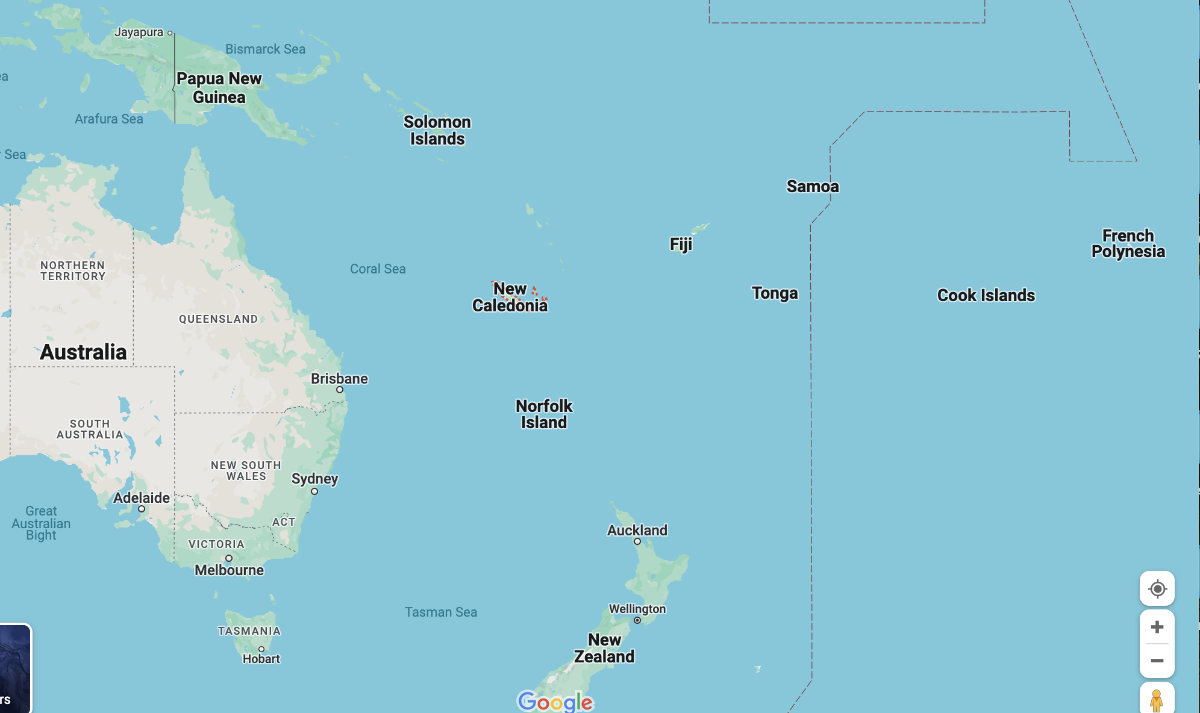
Seeking independence
New Caledonia has been a French territory since the mid-1800s.
Almost two centuries on, its politics remains dominated by debate about whether the islands should be part of France, autonomous or independent — with opinions split roughly along ethnic lines.
The latest cycle of violence was sparked by plans in Paris to impose new voting rules that could give tens of thousands of non-Indigenous residents voting rights.
Pro-independence groups say that would dilute the vote of Indigenous Kanaks, who make up about 40 percent of the population.
French authorities have called for talks and insist the situation is now “calmer” and being brought under control.
Around 1,000 security forces began reinforcing the 1,700 officers on the ground from Thursday.
Efforts to negotiate peace have so far stumbled, although French President Emmanuel Macron had begun contacting pro- and anti-independence officials individually on Friday, his office said.
'Azerbaijani actors'
A local business group estimated the damage, concentrated around Noumea, at 200 million euros ($217 million).
The damage to the islands’ reputation may cost even more.
Tourism is a big earner for New Caledonia, but an estimated 3,200 tourists and other travelers have been stranded inside or outside the archipelago by the closure of Noumea’s international airport.
The unrest has also pushed organizers to cancel plans to bring the Olympic flame through New Caledonia on its journey from Athens to Paris — where the summer Games will begin in late July.
“I think everyone understands, given the current context, the priority is consolidating a return to public order and then appeasement,” French Sports Minister Amelie Oudea-Castera said on Saturday.
On Friday, French government agency Viginum said it detected a “massive and coordinated” online campaign pushing claims that French police had shot pro-independence demonstrators in New Caledonia.
Paris pointed to the involvement of “Azerbaijani actors” in the campaign, deepening a diplomatic spat between the two countries.
Azerbaijan has denied accusations of interference in New Caledonia.
1m march in London to mark 76 years of Nakba

- 2-km march led by Gazan photojournalist Motaz Azaiza
LONDON: About 1 million people peacefully marched in London on Saturday to commemorate the 76th anniversary of the Nakba (Catastrophe), which saw the expulsion of nearly 800,000 Palestinians from their homeland when Israel was established in 1948.
Regular Saturday marches in London since the Gaza war began last October have drawn hundreds of thousands of participants.
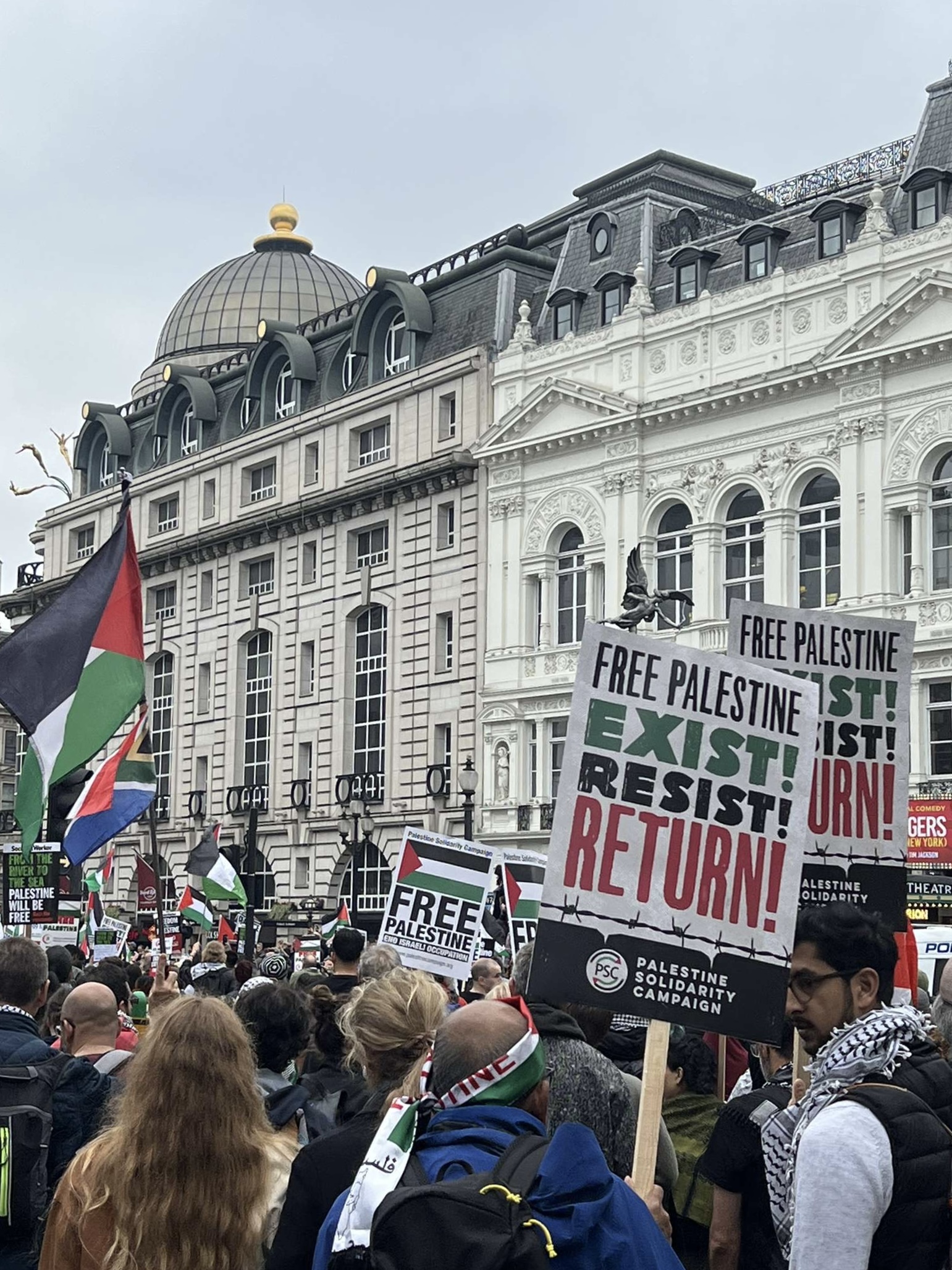
Crowds gathered at the BBC headquarters for a 2-km march led by Palestinian photojournalist Motaz Azaiza and a group of young British Palestinians carrying large lock keys, which symbolize their inalienable right to return to their homes under international law.
Azaiza’s Instagram following has surged to over 18 million as he documented the daily realities of Israel’s invasion and relentless bombardment of Gaza.
Since January, the 24-year-old has been traveling worldwide to advocate for a ceasefire and an end to the Israeli occupation.
“I didn’t believe that I’d stay alive to stand today here in London in front of the people. You saw me there under the bombing,” he told the crowd.
“You made me hope that there was hope. I didn’t believe in anyone, but … today, the moment I saw you all I thought there’s hope. The hope is in the people, not in the governments.”
Several pro-Palestinian organizations across the UK organized the march, calling on the British government to halt arms exports to Israel and restore funding to the UN Relief and Works Agency for Palestine Refugees in the Near East.
“Today, we reflect on the reality that this Nakba couldn’t be sustained by Israel without the enduring complicity of Western powers, including successive UK governments,” said Ben Jamal, director of the Palestine Solidarity Campaign.
“Today, even in this darkest moment, we also march to celebrate and affirm the refusal of the Palestinian people to succumb to erasure. We won’t stop, we won’t rest, until the Palestinian people finally achieve their liberation.”
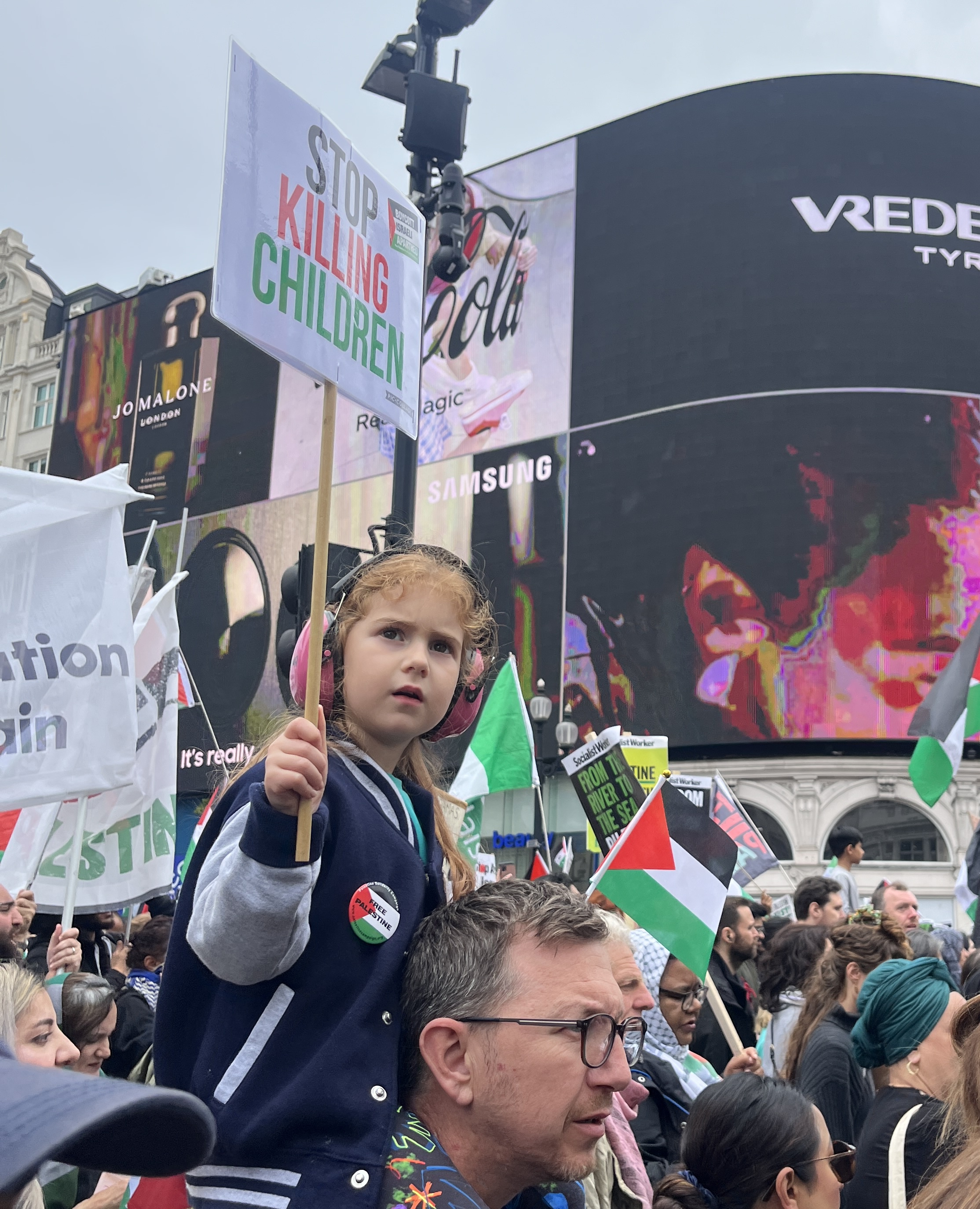
The rally was met with a much smaller counter-protest carrying Israeli flags. There were only eight arrests reported by the London Metropolitan Police.
Parts of northern India scorched by extreme heat with New Delhi on high alert

NEW DELHI: Parts of northwest India sweltered under scorching temperatures on Saturday, with the capital New Delhi under a severe weather alert as extreme temperatures strike parts of the country.
India’s weather department expects heat wave conditions to persist across the north for the next few days, and has put several states on high alert. On Friday, parts of New Delhi reported up to 47.1 degrees Celsius. The nearby states of Punjab, Haryana and Rajasthan also saw temperatures soar and are likely to stay high over the next few days, said Soma Sen Roy, a scientist at the India Meteorological Department.
Roy cautioned people against going outdoors under the afternoon sun, drink lots of water and wear loose-fitting clothes while those who are especially vulnerable like the elderly should stay indoors.
The extreme temperatures in northern India coincide with a six-week-long general election, with experts worried that the heat wave could increase health risks as people wait in long lines to cast their vote or candidates campaign aggressively in the outdoors. One minister fainted due to heat last month while addressing an election rally in Maharashtra state.
Satish Kumar, a 57-year-old rickshaw driver in the capital, said his work was suffering because of the heat. “People are not coming outside, (markets) are nearly empty,” he said.
Pravin Kamath, a 28-year-old who runs a cart selling cold drinks, complained that it was so hot he could hardly stand being outdoors. “But I must work. What can I do? I am poor so I have to do it.”
The main summer months — April, May and June — are always hot in most parts of India before monsoon rains bring cooler temperatures. But the heat has become more intense in the past decade and is usually accompanied by severe water shortages, with tens of millions of India’s 1.4 billion people lacking running water.
A study by World Weather Attribution, an academic group that examines the source of extreme heat, found that a searing heat wave in April that struck parts of Asia was made at least 45 times more likely in some parts of the continent by climate change.
Asian activists call out Western feminists over ‘selective empathy’ on Gaza

- Non-Western feminists say white supremacy, imperialism are inherent to Western feminism
- Seven months into Israel’s deadly war on Gaza, feminists in the West have been largely silent
JAKARTA: When Western actresses and female politicians cut their hair to protest the death of Mahsa Amini or rallied against the Taliban ban on girls’ education, they stood up to defend women’s rights. However, the zeal went missing when it came to Palestine, non-Western feminists say, denouncing their peers’ silence on Israel’s killing of women in Gaza.
Mass protests and displays of solidarity in Europe and the US broke out in 2022 and carried on into 2023 following the death in Iranian police custody of the 22-year-old Amini, who was charged with breaching hijab rules. In the same years, when the Taliban barred Afghan girls from school, women united in outcry and called for international pressure against them.
But more than seven months into Israel’s indiscriminate killing, wounding, and maiming of Palestinian civilians, the West’s mainstream feminist movement has been largely silent.
At least 35,800 people in Gaza have been killed and 80,000 wounded by Israeli airstrikes and ground offensive that have destroyed most of the enclave’s infrastructure and rendered it uninhabitable.
The majority of the dead are women and children. Many have lost their lives as most of the hospitals have been flattened by Israeli troops and no medical assistance could reach them.
The International Rescue Committee estimated last month that 37 mothers had been killed in Gaza each day and 60,000 pregnant women had no access to midwives or doctors, while tens of thousands struggled with breastfeeding as they were so malnourished due to Israel’s blockade of humanitarian aid.
In the face of the widely documented atrocities, Haein Shim, Korean activist and spokesperson of Haeil, a Seoul-based feminist group, told Arab News that Western feminists were exhibiting “selective empathy” and “double standards” with regard to Israel’s onslaught, the criticism of which has regularly been labeled as “antisemitism” — not only by Israeli authorities but by Western leaders as well.
“I strongly believe these issues are interconnected with racism, imperialism, and colonialism,” Shim said.
“We need to urge each other to break the silence and unite against occupation and subjugation, Israel’s human rights abuses and ongoing genocide. One thing to be clear: Our solidarity does not mean antisemitism but only to end the vicious genocide and violence against women and children.”
While Shim believes it is not too late for “global feminist solidarity” with women in Gaza, Fadiah Nadwa Fikri, Malaysian human rights lawyer and scholar focused on decolonization, sees an intrinsic flaw in Western feminism, which might prevent it.
“The function of Western feminism, which is inherently imperialist, is to reduce and dehumanize not only Palestinian women and children but also Palestinian men, who have been subjected to decades of Israeli settler colonialism, with the full support of US imperialism and its allies in Europe,” she said.
“It is, therefore, not surprising to witness the deafening silence of most Western feminists, who are staunch advocates of this strand of feminism, in the face of relentless imperialist violence in Gaza and all of historical Palestine. Their silence is an endorsement of the status quo.”
For Fikri, Western feminism has been shaped by “the racist narrative of the clash of civilizations,” and its silence on Gaza was merely consequential.
“We see women like Madeline Albright, Condoleezza Rice, Hilary Clinton, Kamala Harris — both white and non-white — who depict themselves as champions of women’s rights become members of the ruling classes of imperialist states that are responsible for the mass death, destruction, and suffering around the world,” she said.
“Therefore, there are no double standards of Western feminism; there is only one political standard meant to protect the interests of the imperialist ruling classes, which has been applied consistently.”
In the context of Israel and accusations of antisemitism fired against its critics, Asian feminists also cited the problem of white supremacy, which they closely linked with Zionism.
“Zionist ideologies are not just harming and discriminating against Palestinians, and the destruction of Palestine is not merely about Palestine. Zionism is about white supremacy and colonization, and the destruction of Palestine is just another example of imperialist violence inflicted by Western colonizers, aka white people,” said V., member of Chinese Feminism in Toronto, a Canada-based grassroots collective, who requested to remain anonymous.
“If we consider the sociopolitical context of North America, we know most Jews are also white people, yet we do not have the space to discuss the complexity of antisemitism and white supremacy simultaneously. I guess that speaks a lot (as to) why white feminists tend to be hypocritical here.”
Her colleague, G., also a member of the group, said that hypocrisy was also present among non-white women leaders who were “internalizing whiteness” and embracing Zionism.
“We need to understand this should not be done in our names. We need to have firm voices and expose these leaders as Zionist agents and complicit in genocide, instead of accepting the fact that our elected leaders turn complicit and no longer represent us. We need to hold them accountable,” she said.
“Decolonization is not just theory. We all need to move beyond the bystander observer position and let Palestine radicalize us. We need to continue to educate ourselves and our communities on colonial feminism/pinkwashing and purplewashing.”
Part of the struggle is debunking pro-Israel propaganda and fighting “against the utilization of antisemitism to shut down any criticism against Israeli or Zionist policies,” according to Okky Madasari, Indonesian novelist and academic, whose research focuses on knowledge production and censorship.
“There must be a unified campaign to stop believing anything coming out from the Israeli authorities. They are liars unless they are proven otherwise,” she told Arab News.
For those activists who for the past seven months have been silent over Gaza, Okky suggested that they stop using the feminism label altogether.
“You should be ashamed of yourself if you don’t speak up against Israel when you are so fussy about many other more trivial things,” she said.
“Condemning Israel and taking sides with the Palestinians is what any decent human being must do, let alone if you are a feminist.”
Parts of northern India scorched by extreme heat with New Delhi on high alert

- India’s weather department expects heat wave conditions to persist across north for next few days
- On Friday, parts of New Delhi reported up to 47.1°C, with temperatures also soaring in nearby states
NEW DELHI: Parts of northwest India sweltered under scorching temperatures on Saturday, with the capital New Delhi under a severe weather alert as extreme temperatures strike parts of the country.
India’s weather department expects heat wave conditions to persist across the north for the next few days, and has put several states on high alert.
On Friday, parts of New Delhi reported up to 47.1 degrees Celsius (116 degrees Fahrenheit). The nearby states of Punjab, Haryana and Rajasthan also saw temperatures soar and are likely to stay high over the next few days, said Soma Sen Roy, a scientist at the India Meteorological Department.
Roy cautioned people against going outdoors under the afternoon sun, drink lots of water and wear loose-fitting clothes while those who are especially vulnerable like the elderly should stay indoors.
The extreme temperatures in northern India coincide with a 6-week-long general election, with experts worried that the heat wave could increase health risks as people wait in long lines to cast their vote or candidates campaign aggressively in the outdoors. One minister fainted due to heat last month while addressing an election rally in Maharashtra state.
Prime Minister Narendra Modi as well as his main challenger, Rahul Gandhi of the opposition Congress Party, are expected to hold rallies in New Delhi later on Saturday, as the city heads to the polls on May 25.
Satish Kumar, a 57-year-old rickshaw driver in the capital, said his work was suffering because of the heat. “People are not coming outside, (markets) are nearly empty,” he said.
Pravin Kamath, a 28-year-old who runs a cart selling cold drinks, complained that it was so hot he could hardly stand being outdoors. “But I must work. What can I do? I am poor so I have to do it.”
The main summer months — April, May and June — are always hot in most parts of India before monsoon rains bring cooler temperatures. But the heat has become more intense in the past decade and is usually accompanied by severe water shortages, with tens of millions of India’s 1.4 billion people lacking running water.
A study by World Weather Attribution, an academic group that examines the source of extreme heat, found that a searing heat wave in April that struck parts of Asia was made at least 45 times more likely in some parts of the continent by climate change.
Climate experts say extreme heat in South Asia during the pre-monsoon season is becoming more frequent and the study found that extreme temperatures are now about 0.85 C (1.5 F) hotter in the region because of climate change.
At least 28 heat-related deaths were reported in Bangladesh, as well as five in India in April. Surges in heat deaths have also been reported in Thailand and the Philippines this year, according to the study.
Extreme heat is fast becoming a public health crisis in India, with more than 150 people dying last year during heat waves. The government estimates nearly 11,000 people have died during heat waves this century, yet experts say such figures are likely a vast undercount.



